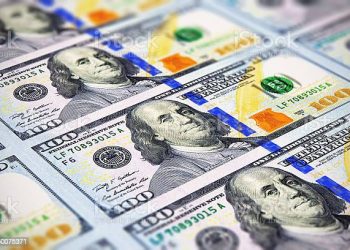The Japanese yen briefly weakened beyond 150 against the US dollar, sparking concerns of potential currency intervention by Japanese authorities. This comes as the persistent yield gap between Japan and the United States continues to weigh on the yen, making it this year’s worst-performing major currency.
In early Asian trading on Monday, the yen touched 150.11 against the greenback before making a swift recovery. It was trading at 149.87 at 11:30 a.m. in Tokyo, reflecting the volatility and uncertainty surrounding this currency pair.
Traders are showing caution in betting on further depreciation of the yen, largely due to the looming risk of intervention from Japanese authorities. Japan’s Finance Minister, Shunichi Suzuki, emphasized the importance of stability in foreign exchange markets that accurately reflect economic fundamentals.
Yukio Ishizuki, senior currency strategist at Daiwa Securities Co. in Tokyo, noted that the sudden break of the 150 line was likely led by speculators during hours with low liquidity and fewer participants. He also suggested that concerns about intervention are causing the topside of the currency pair to become heavier in Tokyo trading hours, making market participants nervous.
Fukuhiro Ezawa, head of financial markets in Tokyo at Standard Chartered Bank, highlighted the role of algorithmic transactions in the yen’s rapid recovery from above 150. These automated trades were executed in response to concerns about potential intervention.
The wide interest rate disparity between the US and Japan is a key driver of the yen’s weakening. The US Treasury 10-year yield is at 4.96%, nearly six times higher than Japan’s equivalent yield of 0.835%. The divergence in monetary policies is exacerbating the currency gap, with Bank of Japan Governor Kazuo Ueda reaffirming the central bank’s commitment to maintaining accommodative settings to achieve a stable and sustainable 2% inflation rate.
Traders are currently on edge as the Bank of Japan policy meeting approaches on October 30-31, coinciding with rising tensions in the Middle East that are adding uncertainty to global markets.
Additionally, investors are digesting reports suggesting that BOJ officials are contemplating adjustments to the yield-curve control (YCC) program, especially as domestic long-term interest rates rise in tandem with those in the US.
Rodrigo Catril, currency strategist at National Australia Bank, expressed caution about potential changes to the YCC program, noting that a simple widening of the band may not be sufficient to significantly strengthen the yen. He believes the market is right to be cautious.
Experts at RBC BlueBay Asset Management have also stated that a tweak to the BOJ’s ultra-loose monetary policy this month could potentially push the yen to 145 against the dollar if the central bank signals an impending rise in interest rates.
Japan’s previous interventions in the currency market involved an expenditure of around ¥9 trillion ($60 billion) in September and October last year, marking the first intervention to support the yen since 1998. This year, the yen has depreciated by more than 12% against the dollar, making it the worst-performing currency among its Group-of-10 peers.
Japan’s chief currency official, Masato Kanda, has affirmed that rate hikes and interventions are tools to address excessive currency movements and that action will be taken if necessary. However, he has not confirmed whether recent market movements were speculative.
On the other hand, the International Monetary Fund (IMF) has stated that it does not see any compelling factors necessitating Japanese intervention in the foreign exchange market to support the yen, further adding to the uncertainty surrounding the yen’s future performance.











